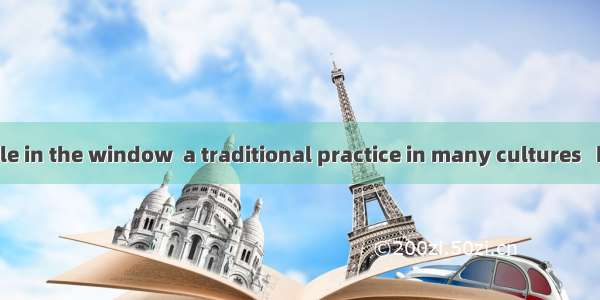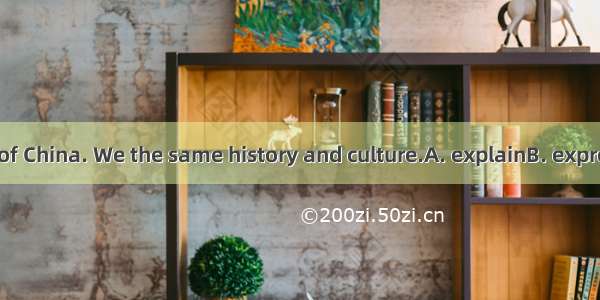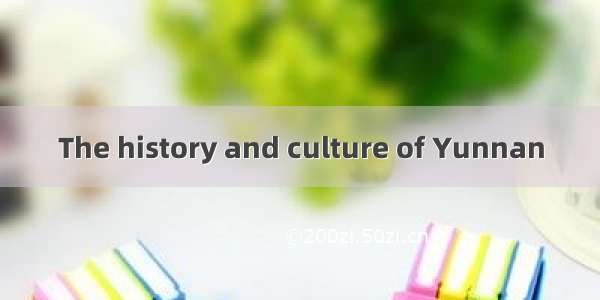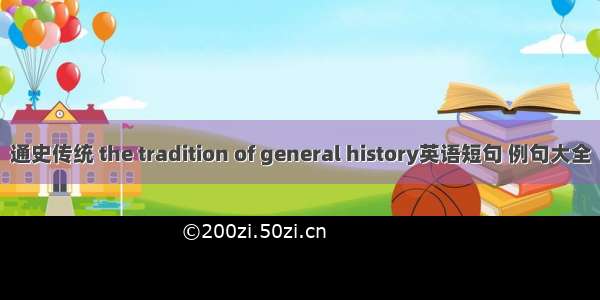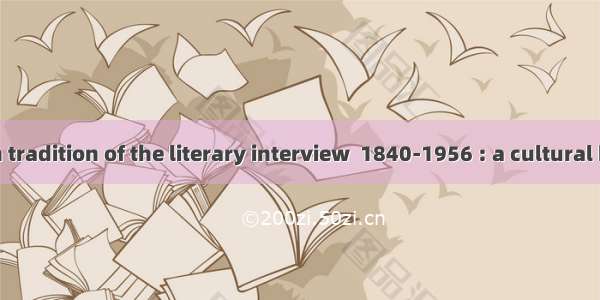
ABSTRACT
“The American Tradition of the Literary Interview 1840 – 1956: A Cultural
History” is the first study to document the development of the literary interview in the
United States. A handful of critics have discussed the literary interview and traced it back
to various European cultural traditions; however, I argue that, like the interview, which
the British journalist William Stead wrote “was a distinctly American invention,” the
literary interview was a particularly American form. Drawing on archival research and
new readings of primary sources, this project examines the literary interview’s systemic
growth and formal characteristics between 1842 and 1956. I trace connections among the
American press, culture, and literary marketplace to offer an as-yet unwritten history of
the literary interview. During Charles Dickens’s 1842 North American tour, the first
literary interviews were published in written-up, or paragraph form and resembled written
snapshots or sketches. As a result of the cult of domesticity and the popular scandals of
the mid-to-late nineteenth century, the literary interview developed into a slightly longer
and more narrative form that focused on an author’s surroundings and living quarters.
With the rise of yellow journalism and muckraking reporting during the first decades of
the twentieth century, the literary interview became a more investigative and intrusive
form; yet at the same time, the first in-depth, literary conversations with American
authors were published. During the interwar period, the second wave of “girl reporters”
and lady interviews transformed the written-up literary interview into a more nuanced
form that exhibited rhetorical and literary flourishes. With the development of the New
Yorker profile and the Paris Review interview in the mid-twentieth century, the literary
interview branched off into two distinct modes: the profile and the author Q & A. This
history of the literary interview offers a model of reading mass media communications in
terms of both content and form. In doing so, this project challenges the critical
frameworks that dismiss the literary interview as ancillary to literature and articulate the
importance of interviews, communication, and conversation in American culture.
Abstract Approved: ____________________________________
Thesis Supervisor
____________________________________
Title and Department
____________________________________
Date
THE AMERICAN TRADITION OF THE LITERARY INTERVIEW, 1840 – 1956: A
CULTURAL HISTORY
by
Sarah Fay
A thesis submitted in partial fulfillment
of the requirements for the Doctor of
Philosophy degree in English
in the Graduate College of
The University of Iowa
May
Thesis Supervisor: Associate Professor Loren Glass
Copyright by
SARAH FAY
All Rights Reserved
Graduate College
The University of Iowa
Iowa City, Iowa
CERTIFICATE OF APPROVAL
_______________________
PH.D. THESIS
_______________
This is to certify that the Ph.D. thesis of
Sarah Fay
has been approved by the Examining Committee
for the thesis requirement for the Doctor of Philosophy
degree in English at the May graduation.
Thesis Committee: ___________________________________
Loren Glass, Thesis Supervisor
___________________________________
Garrett Stewart
___________________________________
Harry Stecopoulos
___________________________________
Brooks Landon
___________________________________
Russell Valentino
ii
To my mother, Dr. Lynn McCarthy
iii
ACKNOWLEDGMENTS
First, I would like to thank my dissertation director Loren Glass, who has
managed to steer me in the right direction every time, and the other members of my
committee—Harry Stecopoulos, Brooks Landon, Garrett Stewart, and Russell
Valentino—who have mentored me as a student, a teacher, a scholar, and a writer. I am
grateful to the members of the English Department at the University of Iowa for their
generous assistance and guidance and to the administrators of the Frank Writing Center at
the Tippie College of Business for making me a better editor. I am indebted to my first
mentor Judith Pascoe, who knew that my dissertation would examine the connections
among literary theory, literary history, and creative writing practices long before I did. I
would also like to thank those who read drafts of this dissertation along the way: Michael
Hill, Priya Kumar, Kathleen Diffley, Eric Gidal, Lori Branch, David Hamilton, Robin
Hemley, Kevin Kopelson, Matt Lavin, Raquel Baker, Christine Norquest Salinas, Melissa
Mcrae, and everyone who participated in the Andrew W. Mellon Summer Seminar in
. I am grateful to my editors Eleanor Barkhorn at the Atlantic and Lorin Stein at the
Paris Review for letting me publish parts of this dissertation in those magazines and
thereby helping me to think through it, and to my many students, who have given me
energy and insight over the years. Finally, I want to express my appreciation to my
friends and my family—Lynn McCarthy, Elizabeth Samuels, Tessa Samuels, Max
Samuels, and Howard Samuels—who have supported and encouraged me.
iv
ABSTRACT
“The American Tradition of the Literary Interview 1840 – 1956: A Cultural
History” is the first study to document the development of the literary interview in the
United States. A handful of critics have discussed the literary interview and traced it back
to various European cultural traditions; however, I argue that, like the interview, which
the British journalist William Stead wrote “was a distinctly American invention,” the
literary interview was a particularly American form. Drawing on archival research and
new readings of primary sources, this project examines the literary interview’s systemic
growth and formal characteristics between 1842 and 1956. I trace connections among the
American press, culture, and literary marketplace to offer an as-yet unwritten history of
the literary interview. During Charles Dickens’s 1842 North American tour, the first
literary interviews were published in written-up, or paragraph form and resembled written
snapshots or sketches. As a result of the cult of domesticity and the popular scandals of
the mid-to-late nineteenth century, the literary interview developed into a slightly longer
and more narrative form that focused on an author’s surroundings and living quarters.
With the rise of yellow journalism and muckraking reporting during the first decades of
the twentieth century, the literary interview became a more investigative and intrusive
form; yet at the same time, the first in-depth, literary conversations with American
authors were published. During the interwar period, the second wave of “girl reporters”
and lady interviews transformed the written-up literary interview into a more nuanced
form that exhibited rhetorical and literary flourishes. With the development of the New
Yorker profile and the Paris Review interview in the mid-twentieth century, the literary
interview branched off into two distinct modes: the profile and the author Q & A. This
history of the literary interview offers a model of reading mass media communications in
terms of both content and form. In doing so, this project challenges the critical
v
frameworks that dismiss the literary interview as ancillary to literature and articulate the
importance of interviews, communication, and conversation in American culture.
vi
TABLE OF CONTENTS
LIST OF FIGURES ......................................................................................................... viii
INTRODUCTION ...............................................................................................................1
CHAPTER 1: A SNAPSHOT AND A SKETCH, 1842 ...................................................15
Human Interest ................................................................................................17
Intimate Strangers ...........................................................................................22
The Daguerreotype, Phrenology, and Physiognomy ......................................24
The Sketch ......................................................................................................30
The Trouble with Authorial Celebrity ............................................................39
Conclusion ......................................................................................................42
CHAPTER 2: THE AUTHOR AT HOME, 1882 ..............................................................44
The Consummate Aesthete .............................................................................45
Popular Scandals and the Narrative Frame .....................................................47
Author Readings and the Cult of Domesticity ................................................54
The Author at Home .......................................................................................62
The Aesthete at Home ....................................................................................65
Performativity and the Self-Interview ............................................................67
Conclusion ......................................................................................................72
CHAPTER 3: THE INVASIVE INTERVIEW AND THE BOSWELLIAN
TREATMENT, 1908 ......................................................................................73
The American Tradition of Lyceums and Conversations ...............................74
The Invasive Interview ...................................................................................78
Courting the First Professional Interviewee ...................................................81
The Final Volume of Paine’s Mark Twain: A Biography ...............................88
Pilgrimages to Meet the Good Gray Poet .......................................................94
Traubel’s With Walt Whitman in Camden ......................................................96
Conclusion ....................................................................................................102
CHAPTER 4: LADY INTERVIEWERS, QUESTIONNAIRES, AND THE
LITERARY GOSSIP COLUMN, 1920 & 1935 ..........................................104
Reportage: The Legacy of Margaret Fuller ..................................................106
Lady Interviewers .........................................................................................108
The Literary Questionnaire ...........................................................................122
The Literary Gossip Column ........................................................................126
Conclusion ....................................................................................................134
CHAPTER 5: THE LITERARY INTERVIEW BRANCHES OFF INTO TWO
DISTINCT FORMS: THE PROFILE AND THE Q & A, 1956 ..................135
Plimpton and the Paris Review Interview ....................................................137
The Written-Up Interview and the New Yorker Profile ................................143
The Paris Review Q & A ..............................................................................151
vii
The Rewritten Interview, Craft Talk, and the Winter Writer at Work .........155
Conclusion ....................................................................................................170
NOTES ......................................................................................................................172
BIBLIOGRAPHY ............................................................................................................208
原文地址:
http://www.hongfu951.info/file/resource-detail.do?id=d3e1601a-0645-403f-8f1a-a0008d6736ab

